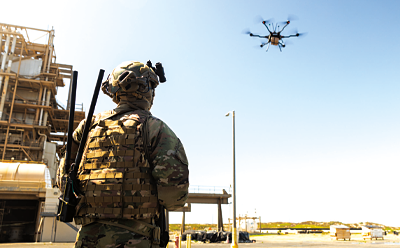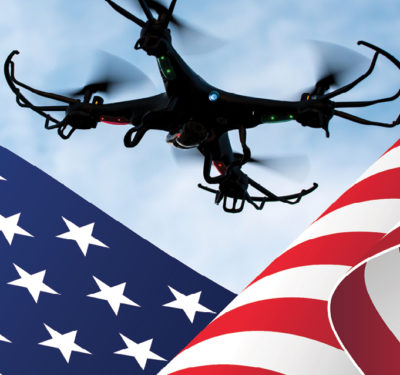The FAA has deemed Remote ID to be an essential component for advanced drone operations, but the rules requiring its use have been anything but swift and sure.
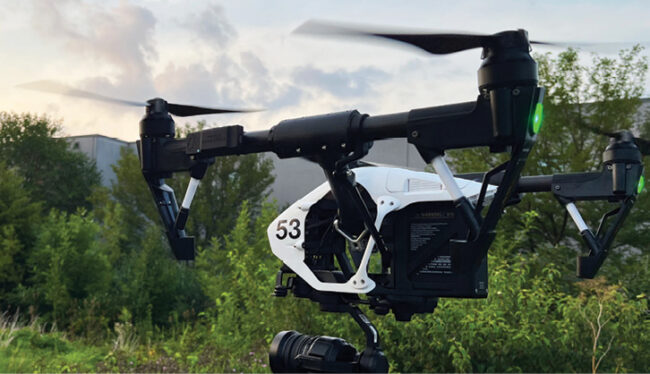
The FAA has deemed the Remote Identification requirement for drones, a digital license plate of sorts, a key building block for advanced operations. Critical enablers, such as UAS Traffic Management, and complex missions like those that occur over people and beyond visual line of sight, hinge on Remote ID capabilities.
Under the law, by now, both manufacturers and drone pilots alike should be Remote ID-compliant. However, just before the Sept. 16 pilot compliance deadline, the FAA announced an enforcement grace period, in effect until March 2024.
This pivotal rule to enhance the security of our skies has been kicking around for more than seven years. Is it alive and kicking? This article traces the rule’s origin, the rocky road to finalization and the current status of its implementation from both a technological and operational standpoint, to answer that question.
GOING THE DISTANCE
Congress, in the 2016 FAA Extension, Safety, and Security Act, recommended the FAA create a system for security professionals to keep track of drones in the sky in real-time.
It was not until December 2019 that the FAA introduced its proposed rule for how drones should be identified. The draft rule would have created a requirement for two types of Remote ID drones: Standard RID UAS, which would send out identification messages directly and also through the internet; and Limited RID UAS, which would only send messages through the internet and had to remain close to their control stations. The public had until March 2, 2020, to share their thoughts on this proposal. The FAA received more than 53,000 comments in those three months.
By the end of 2020, the FAA shared its final rule. To the surprise of many, the FAA decided to go with a system where drones would only send out messages directly using WiFi or Bluetooth, not through the internet. Under this new Remote ID rule, codified at Part 89, to freely fly in the National Airspace System, all registered drones weighing between .55 to 55 pounds had to share identification messages (message elements) that included the drone’s ID, location, speed and more. While anyone could see these messages, only law enforcement, security agencies and the FAA could match them with the FAA’s drone registration data. Drones can either have the Remote ID system built-in (standard RID) or they can attach a separate device (broadcast module) to send out these messages. Drones without Remote ID capabilities can only fly in special zones called Federally Recognized Identification Areas, or FRIA.
The rule also contained compliance deadlines for drone manufacturers, who were supposed to build Remote ID into their platforms within 18 months, or September 2022. Drone operators had until September 2023 to comply.
But just a few months after the FAA published the final rule, it faced a significant legal challenge.
A KICK TO THE GUT
In August 2021, an Orlando-based, multi-million dollar online store that caters to first-person view drone pilots, RaceDayQuads, challenged the FAA’s Remote ID rule in federal court. RaceDayQuads’ brief alleged the FAA talked to outside groups to inform the rule without informing the public, failed to consult with RTCA and NIST as required, didn’t address important public comments, made significant rule changes from the original proposal, and that the rule violated people’s Fourth Amendment rights.
In December 2021, attorneys for both sides argued their cases before a panel of three judges in the U.S. Court of Appeals for the D.C. Circuit. In what appeared to be a potential win for RaceDayQuads, the judges peppered the government attorney for 27 minutes on the Fourth Amendment issue, focusing on reasonable expectations of privacy and persistent geolocational tracking. For example, one judge asked, “What is the government’s interest in obtaining RID data from a drone operating entirely within one’s property?”
A ruling was expected in early 2022. It did not come until July 2022, just before the manufacturer’s Remote ID compliance deadline and more than a year after the suit had been filed. The court ruled in favor of the FAA. Because drones fly openly in the sky, it reasoned, drone pilots shouldn’t expect their drone’s location to be private while flying. The court also rejected that the rule might invade privacy because it only calls for Remote ID capability installation, not actual monitoring by law enforcement, provides for short-term access to location information because broadcasts start and stop with takeoff and landing, does not authorize the aggregation and storage of flight data for later law enforcement queries and still requires law enforcement to abide by the Constitution.
While the suit ended with an FAA win, the court did not foreclose the possibility of a future as-applied challenge. The court made this clear by stressing this point: “We’re not ruling out the chance for someone to argue that applying the Remote ID rule to their specific drone use would unfairly invade their privacy.”
THE CAN KICKED
After the RaceDayQuads ruling in July 2022, manufacturers had to scramble to meet the rule’s September compliance deadline. So as to avoid having to redo the rule, the FAA leaned into its discretionary enforcement authority. In September 2022, it published an enforcement policy in the Federal Register that essentially gave drone manufacturers a reprieve for noncompliance with the Remote ID production requirements until Dec. 16, 2022.
No enforcement actions appear to have been taken. To date, the FAA has listed 195 total Remote ID compliant drones and broadcast modules on its UAS Declaration of Compliance website (uasdoc.faa.gov/listDocs). Remote ID broadcast modules account for only 5% of this total. Considering that as of 2022, Droneii’s Drone Market Map listed 1,076 drone manufacturers, most of which produce multiple platforms, these numbers are concerning.
In the meantime, the FAA’S Flight Standards District Offices have been receiving more than 10 emails a day related to Remote ID requirements and its UAS Support Center has received more than 380 inquiries over the past 60 days.
ANOTHER KICK TO THE RIGHT
The extent of Remote ID noncompliance remains staggering. FAA Drone Zone data as of Aug. 28 indicates there are 261,143 operators flying with a Part 107 remote pilot certificate and 328,372 recreational flyers operating under the recreational drone exception (49 U.S.C. 44809) that are still not Remote ID equipped.
Only half of the approved Remote ID modules are currently in stock and available for sale, and they cost around $300 each. Add to these costs the fact that drone pilots need to update their FAA registration to follow the new rule. This costs $5 per drone. For now, the FAA is letting people do this for free, but when this requirement kicks in, these ancillary Remote ID costs can also add up.
Also as of August, the FAA has only approved 412 FRIA applications. It has 1,206 still pending review.
Just last month, on the eve of the drone pilot compliance deadline for Remote ID, the FAA again leveraged its enforcement discretion, allowing for potential grace for nonconformance through March 16, 2024. It did so due to “unanticipated issues with the available supply and excessive cost of remote identification broadcast modules and unanticipated delay in the FAA’s approval of FAA-recognized identification areas.”
KICKING THE TIRES
According to several reputable Remote ID makers, the “available supply” concern is not, in fact, a supply chain issue. The current situation amounts to more of a market-demand-deadline challenge.
Christian Ramsey, managing director, uncrewed aviation at uAvionix, creators of the pingRID Module, said, “Many drone pilots anticipated a delay in enforcement and waited until late August and September to place orders, expecting manufacturers would have them in stock.”
From his perspective as a Remote ID manufacturer, the amount of demand was unknowable, and many drone platform manufacturers offer firmware upgrades for their platforms to become Remote ID compliant without the need for a Remote ID broadcast module.
“A game of chicken resulted, and there was not enough supply to meet the late demand,” Ramsey said. “Fortunately, uAvoinix has been shipping to those who chose to order early. We will continue to deliver through the new enforcement date.”
Similarly, Aaron Pierce, CEO of Pierce Aerospace and developer of the B1 RID Beacon, indicated his company’s module has been available for order since May. He said late demand and orders started “piling in” just before the September 16 deadline. “The last-minute rush occurred when Remote ID suddenly became real,’” he said, adding, “We sold out. Then we sold out again.”
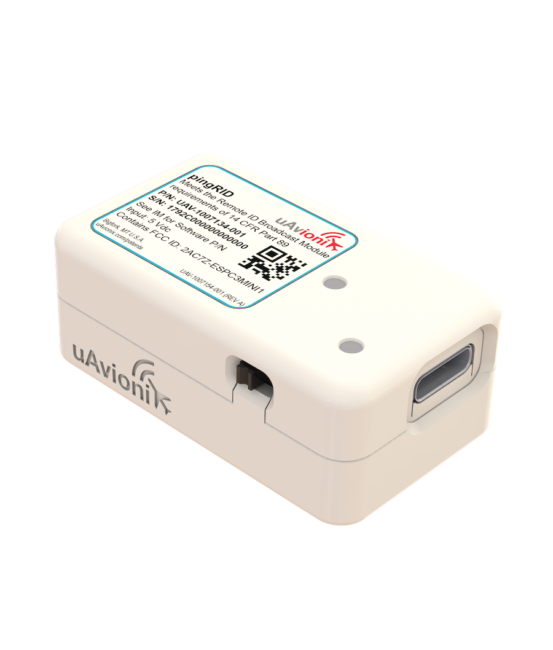
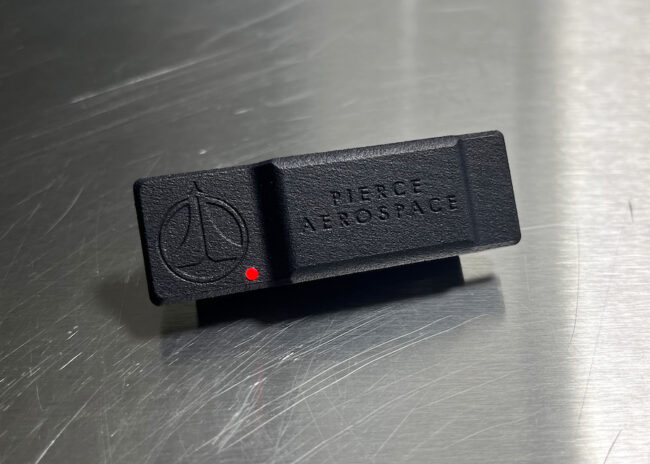
THE TECH KICKER
In addition to the supply availability and cost issues, tech issues with Remote ID still abound. At this year’s FAA Drone Symposium, an FAA representative admitted that the purely commercial and non-FAA approved phone apps available to receive Remote ID signals work only occasionally.
Every phone will operate differently based on how the manufacturer specified the phone’s construction and components. Many variables and environmental factors can impact the performance of an app on a phone. Bluetooth performs better than WiFi if operating a Remote ID mobile application. Android phones seem to work better than iPhones.
Other glitches that have occurred with these unofficial apps include security issues. Some do not have authentication safeguards to distinguish real law enforcement officers, who are entitled to FAA registration data correlation data, with posers. They are giving out personally identifiable information on drone pilots.
For this reason, industry professionals have seen strong demand for specific Remote ID receiving equipment that can perform better than an app on an individual’s mobile phone. Receiving equipment specifically designed for Remote ID can remove variables and significantly improve performance. UAvionix, for example, plans to release mobile and fixed antenna versions of Remote ID receivers soon.
But the ability to detect also depends on the performance of the Remote ID module itself. As with any piece of equipment, some Remote ID modules work better than others in general and for specific use cases. A problem has emerged, Ramsey said, related to custom engineering required for Remote ID integration into more complex platforms.
“Drones that are not mass-produced essentially necessitate that each airframe receive an individual Declaration of Compliance,” he said.
Ramsey also noted that Part 89 of the rule can touch on many other components in the highly integrated systems often found on custom UAS platforms. For example, knowing the GPS location of the operator is a rule requirement, but many of these complex systems are flown from laptops that don’t have GPS capability. Additionally, the rule requires the system to prevent a takeoff if Remote ID is not working. This requires autopilots to be upgraded to allow for such a feature.
Pierce added that phones and the Remote ID mobile applications meet a baseline fundamental requirement for Remote ID, but are not perfect. Phones vary in performance based on make and model and have limited detection ranges. He said Pierce Aerospace’s Remote ID receivers are purpose-built for continuous monitoring. Federal customers at security events and locations of interest have successfully employed the company’s receivers and often detect Remote ID messages from several kilometers away. “Our receivers also provide integration with commercial and government counter-UAS and UTM systems,” he said.
KICKING AND SCREAMING?
The reviews on Remote ID, to date, have been mixed. Most industry professionals appreciate the genuine need for an identification capability to ensure the safety and security of the NAS. But the seven-year rollout has been anything but smooth.
The FAA messaging about this latest “delay,” for example, got muddled in translation. Many pilots assumed the FAA moved the compliance date to March 2024. It did not. The requirement to equip with RID remains intact, as of Sept. 16, but the FAA may apply discretion from an enforcement perspective.
Will history repeat, or will Remote ID be fully in play? Pierce believes the industrial base can support the new March 16 date and does not expect any future shifts. He said his company has a nominal six- to eight-week supply chain turnaround time for the B1 RID Beacon.
“What’s critical for understanding is that none of the companies making Remote ID modules are massive,” he said. “Most of the drone industry is made up of small businesses, and small businesses cannot stock products like Apple does before a new phone release. So, everyone got wiped out of available stock when the market finally responded just before the September 16 deadline.”
What remains to be seen is whether folks hang back over the next several months and once again make a mad dash for Remote ID modules right at the deadline. Until then, Remote ID remains very much alive, but it’s not quite kicking.


